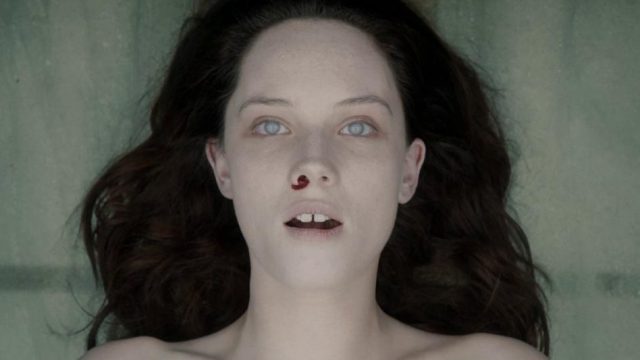Effective, eerie, and original, André Øvredal’s The Autopsy of Jane Doe deserves more attention. In its unfussy way, without any pretense, this stretches the boundaries of the genre as much or more as the more widely championed members of the new “elevated horror” canon, and it does it without sacrificing chills or a quietly gripping narrative. Also, it has Brian Cox.
Cox plays Tommy Tilden, a coroner who is training his son, Austin (Emile Hirsch), in the family business. Father and son both love each other, but there are lines of tension between them and certain unanswered questions: Is Austin giving up his own life to look after his grieving father? Should Tommy try to push him out of the nest? Is he taking advantage of his son’s inertia? Austin’s girlfriend, the brash Emma (Ophelia Lovibond), certainly thinks so–but then, as tempting as it is to side with young love, there’s a solemnity and nobility to the morgue, and it’s jarring that Emma more or less thumbs her nose at it. It’s like she sees the bodies that surround her boyfriend as, at best, intriguingly gross objects, not one-time people freighted with their own significance.
Tommy, on the other hand, is immersed in the odd scientific poetry of his work–he knows the profession’s history and keeps up its traditions–and its combination of intelligence, empathy, and detachment. He is, maybe, the perfect man to autopsy the curious Jane Doe, a pale and seemingly untouched corpse uncovered from the midst of a bloodbath. There’s no obvious cause of death, but perhaps Tommy and Austin will uncover one–over the course of an all-nighter, if necessary.
But opening up Jane Doe reveals horrific trauma beneath the immaculate surface. She’s simultaneously luminous and menacing , and the more Tommy and Austin reveal about her body and her history, the more troubled we are. Øvredal doesn’t go for any cheap tricks–Jane Doe never, say, sits up on the autopsy table–and that restraint, along with the process of Tommy and Austin’s reasoning, is one of the key features of the film. Both attributes make the film’s sense of tragedy more palpable, something that the characters perceive, and achieve, step by rational step.
There’s a satisfying explanation for Jane Doe–one that overturns a horror cliché I dislike, no less–and while I can nitpick it, I don’t want to. Nor do I care that there’s no reason Jane Doe should fixate on the ominously chipper “Open Up Your Heart (And Let the Sun Shine In),” which is used to great effect here. The Autopsy of Jane Doe is, in the end, a very pleasing blend of a traditional ghost story and an unusual structure, and I’m willing to grant it all the leeway it needs to achieve both of those ends.

